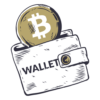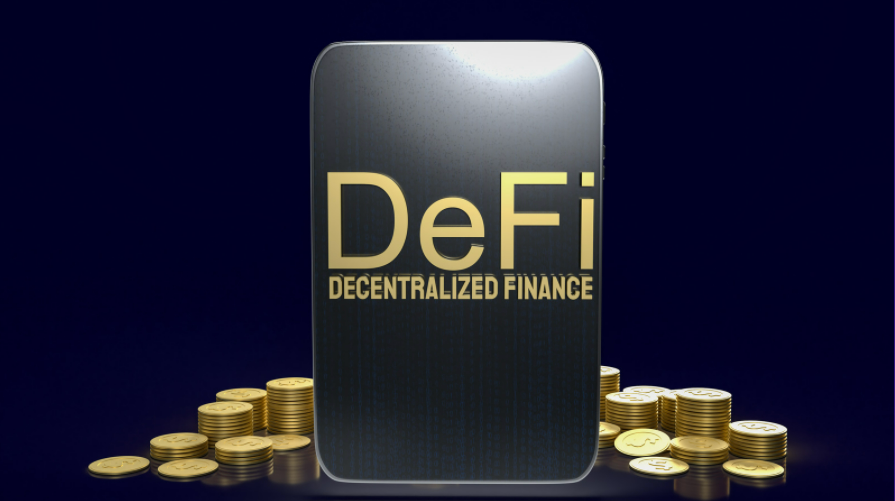Decentralized finance, or short for DeFi, is a relatively new financial system that is based on trustworthy distributed ledgers just like those that are utilized by cryptocurrencies. In the United States, the Federal Reserve and Securities and Exchange Commission (SEC) determine the regulations for centralized financial institutions, such as banks and investment firms, upon which customers rely to have easy accessibility to trade and business services.
DeFi contests this centralized financial system by promoting peer-to-peer digital transactions. DeFi does away with the fees that traditional financial institutions (banks as well as other financial corporations) charge customers for the use of their services. DeFi can be used by anyone with internet access and requires the usage of a protected digital crypto wallet. This article will explain what is DeFi, what’s the difference between DeFi vs. CeFi, and how to make money with DeFi.
Centralized Finance vs. Decentralized Finance (DeFi)
Decentralized finance differs from conventional, centralized banking and financial institutions. Here, you will discover the main features of DeFi and CeFi and how a decentralized financial system differs from a centralized financial system.
Centralized Finance (CeFi)
The money in a centralized financial system is held by banks and other third parties who facilitate the transfer of money between parties; in exchange for their services, each of these parties charges a fee. The merchant initiates a credit card charge, which is then sent to an acquiring bank, which passes the card information to the credit card network.
The charge is validated by the network, after which it submits a payment request to the bank. Generally, retailers must pay for the usage of credit and debit cards, so each organization in the network receives payment for its services. All financial transactions, from mortgage applications to regional bank services, are managed centrally in the CeFi system.
Decentralized Finance (DeFi)
By empowering individuals, merchants, and enterprises with the ability to execute financial transactions using developing technology, decentralized finance removes the need for intermediaries in the financial system. DeFi employs innovations in security protocols, connection, software, and hardware via peer-to-peer financial networks.
People can borrow, trade, and lend utilizing apps that record and validate financial transactions in decentralized financial databases everywhere there is an internet connection. Decentralized finance removes the need for a centralized finance paradigm by allowing anybody, regardless of location or identity, to utilize financial services. DeFi products provide consumers with greater control over their finances via personalized wallets and trade opportunities.
How Does DeFi Work?
Blockchain technology is utilized by decentralized finance. A blockchain is a decentralized and secure ledger or database. Decentralized applications or dApps are utilized to process transactions and operate the blockchain. The blockchain records transactions in blocks, which are then validated by other users. If these verifiers concur on a transaction, the block is closed and encrypted, and a new block containing the previous block’s information is created.
The blocks are “chained” together by the information included in each subsequent block, hence the name blockchain. There is no method to edit a blockchain, as the information in prior blocks cannot be modified without impacting subsequent blocks. In addition to other safety protocols, this concept offers blockchain security.
Uses of DeFi
P2P (peer-to-peer) financial transactions are among the core tenets of DeFi. In a P2P DeFi transaction, two parties agree to exchange bitcoin for goods or services without the involvement of a third party. In DeFi, P2P lending can be used to meet an individual’s loan requirements, and an algorithm would match peers who agree with the lender’s terms before issuing a loan. P2P payments are made using a dApp and adhere to the same blockchain protocol. Another use of DeFi is to take advantage of the best DeFi crypto. Utilizing DeFi enables:
Stablecoins: Stablecoin is an alternate variant of DeFi crypto. Cryptocurrencies frequently face greater price volatility than fiat, which is undesirable for those who wish to know how much their money will be worth in one week. Stablecoins tether cryptocurrencies to fiat currencies, such as the U.S. dollar, to maintain price stability.
Accessibility: A DeFi platform is accessible to anybody with an internet connection, and there are no geographical limitations on transactions.
Low fees and high-interest rates: Any two parties can immediately negotiate interest rates and loan terms using DeFi networks thanks to this technology.
Security and Transparency: Smart contracts recorded on a blockchain and logs of completed transactions are publicly viewable but do not identify your identity. The immutability of blockchains means that they cannot be altered.
Autonomy: DeFi platforms are independent of centralized financial institutions and are not susceptible to failure. The decentralized design of DeFi protocols alleviates this danger to a significant degree.
The Future of DeFi
As more and more individuals are drawn to these DeFi applications, it is difficult to predict their future. It varies greatly on who finds them useful and why. Many believe that various DeFi projects and DeFi crypto projects have the potential to become the next Robinhood by making financial applications more inclusive and accessible to those who do not typically have access to such platforms.
This financial technology is novel, experimental, and problematic, particularly in terms of security and scalability. The developers intend to eventually address these issues. Sharding, a technique for dividing the underlying database into smaller portions that are easier for individual users to operate, could be used to address scalability issues with Ethereum 2.0.

